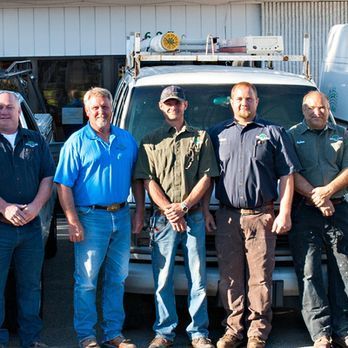How to Fix a Leaking Pipe?
Frozen pipes are a common issue, especially during the cold winter months. When temperatures drop, the water inside pipes can freeze, potentially causing them to burst. Dealing with frozen pipes can be stressful, but with the right knowledge and tools, you can often resolve the issue yourself and prevent costly damage. This guide walks you through the steps to safely thaw and fix frozen pipes.
Leaky Pipe Solutions: How to Fix a Leaking Pipe Like a Pro
A leaking pipe can be a nuisance, but it's a common household issue that you can address without the need for a plumber. In this guide, we'll walk you through the steps to fix a leaking pipe effectively. With our DIY solutions and expert advice, you can save money and prevent further damage to your home.
Identify the Source of the Leak
Before you begin, it's essential to locate the source of the leak. Leaks can occur at joints, cracks, or punctures in the pipe. Here's how to identify the problem:
Visually Inspect the Area: Look for visible signs of water or moisture. Follow the trail of the leak to its source.
Feel for Moisture: Run your fingers along the pipe to feel for wet spots. This can help pinpoint the location of the leak.
Use a Paper Towel: Wipe the pipe with a dry paper towel, and check for any wet spots on the towel.
Gather Your Tools and Materials
To fix the leak, you'll need the following tools and materials:
Pipe Repair Kit: Purchase a pipe repair kit from your local hardware store. These kits typically contain materials like epoxy putty or pipe clamps.
Safety Gear: Always wear safety gloves and eye protection when working on plumbing repairs.
Adjustable Wrench: Use an adjustable wrench to tighten or secure the pipe.
Tape Measure: You may need a tape measure to determine the size of the pipe or the area requiring repair.
Steps to Fix the Leaking Pipe
Turn Off the Water: Before you start any repair, shut off the water supply to the leaking pipe to prevent further leakage.
Clean the Pipe: Remove any dirt or debris from the area around the leak.
Apply the Repair Material: Depending on the type of repair material in your kit, follow the manufacturer's instructions to apply it to the leak. Epoxy putty is a common choice for sealing small leaks.
Secure with Clamps: If your kit includes clamps, place them over the repair material to hold them in place.
Tighten Joints: If the leak is at a joint, use an adjustable wrench to tighten the connection.
Turn the Water Back On: Once the repair material has cured or the joint is tightened, turn the water supply back on and check for any new leaks.
When to Seek Professional Help
While many pipe leaks can be fixed with DIY solutions, there are cases where professional assistance is necessary:
Extensive Damage: If the pipe is severely damaged or corroded, it's best to consult a plumber.
Hidden Leaks: If the leak is within a wall or beneath the floor, professional plumbers have the tools and expertise to locate and repair it.
Lack of DIY Experience: If you're uncomfortable or inexperienced with DIY plumbing repairs, don't hesitate to call a professional.
By following these steps and using the right materials, you can fix a leaking pipe and prevent further water damage to your home. If you ever find yourself in doubt or dealing with a complex plumbing issue, don't hesitate to seek the help of a licensed plumber for a thorough inspection and repairs.

Emergency Plumbers
At sunshine plumbers, we are proud to be on call 24 hours a day, 365 days a year, ready to provide prompt and reliable emergency plumbing services
Residential Plumbing
Let sunshine plumbers take care of your plumbing needs, and we'll make sure your home's plumbing system runs smoothly and efficiently.
Commercial Plumbing
Trust sunshine plumbers to keep your commercial plumbing system in top shape, ensuring smooth operations and customer satisfaction.
List of Services
Contact
(844) 822-7445
Links
Disclaimer
Sunshine Plumbers.com operates as a plumbing referral company, connecting users with independent plumbers in their local areas. Please take note of the following essential information: Disclaimer
All Rights Reserved | Sunshine Plumbers
